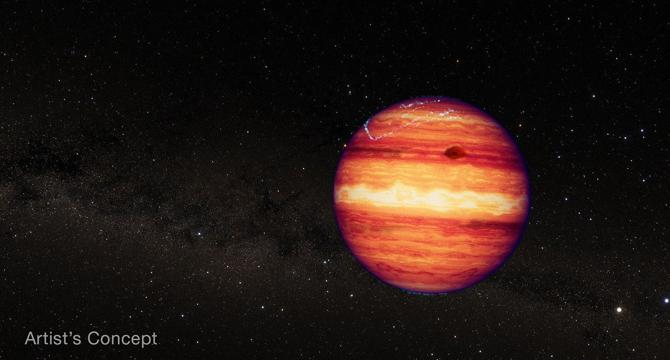Nasa
1M
281

Image Credit: Nasa
NASA’s Webb Exposes Complex Atmosphere of Starless Super-Jupiter
- NASA's James Webb Space Telescope discovered complex variations in brightness of the planetary-mass object SIMP 0136.
- These variations are attributed to atmospheric factors such as cloud layers, temperature, and carbon chemistry.
- The findings provide insight into gas giant atmospheres inside and outside our solar system.
- SIMP 0136, located 20 light-years from Earth, rotates rapidly, making it a valuable target for exo-meteorology studies.
- Previous observations from ground-based telescopes, Hubble, and Spitzer laid the groundwork for Webb's observations of SIMP 0136.
- Webb captured thousands of spectra using NIRSpec and MIRI instruments, unveiling changes in cloud cover, temperature, and carbon chemistry.
- Distinct light-curve shapes in the observations indicated various atmospheric phenomena affecting brightness variations.
- The research revealed patchy clouds, hot spots, and carbon chemistry fluctuations as potential contributors to the observed variability.
- The study highlights the importance of detailed atmospheric characterization in preparation for future exoplanet imaging missions.
- This research, part of Webb's General Observer Program 3548, contributes to expanding our understanding of planetary atmospheres.
Read Full Article
16 Likes
For uninterrupted reading, download the app